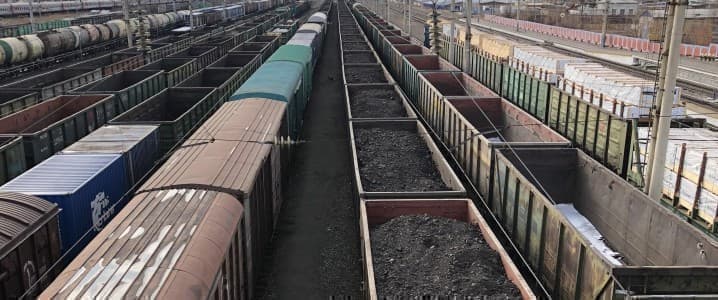China banning Australian coal imports might be one of the most peculiar commodity stories of 2021. At a time when commodity prices are climbing, Chinese authorities decided to drop Australian coal, leading to a surge in worse-quality alternatives just as regional demand peaks. Meanwhile, China’s aim of punishing Australia for calling for an investigation into the origins of Covid has largely failed as Australian producers simply rerouted their cargoes towards India. China, on the other hand, was forced to buy increasing amounts of Indonesian and Russian coal to accommodate domestic demand, triggering a more than 25% price hike compared to January levels. China is more or less self-sufficient in coking coal yet needs substantial amounts of thermal coal for its vast metallurgical industry. Technically, China has a plethora of options to choose from. Adjacent coal-rich Mongolia might have been one of the best and cheapest options, but the closed border hinders larger trade volumes. Thus, Indonesia emerged as the prime supplier of low-calorific value coal, with imports into China hitting an all-time high of 15.9 million tons in January. As heavy rainfall and the onset of Ramadan hindered Indonesia’s exporting potential, the United States took the baton, surging from minuscule export volumes to 1.6 million tons this March. Increasing Russian flows to China became the latest trend in the Asia Pacific, riding high on strong political support from Moscow.
Related: Why Oil Prices Won’t Hit $100
It should not come as a surprise that Russian coal producers latched onto the opportunity at hand. Aggregate Chinese imports of Russian coal in June 2021 totaled 4.04 million tons, almost 20% higher than the previous all-time high recorded in June 2020. In a sense, Russia was preparing for such an event to take place as it had extended the transportation capacities of Eastern-Siberian railways, including but not limited to the Baikal-Amur and Transsiberian Railway networks. Several major coal mines have Chinese co-owners and co-investors such as the Elgaugol in Eastern Siberia which is configured to bring almost all of its output towards the southern neighbor.
Graph 1. Chinese Imports of Coal (million tons per month).

Source: Thomson Reuters.
Sticking to its pledge to place commodities’ trading on a more “scientific” footing, Chinese authorities have introduced an array of measures designed to bring coal prices down. The economic planning arm of the CCP, the National Development and Reform Commission, sought to boost domestic production to counteract the impending shortage – it will take several months however before tangible results appear. Moreover, a recent string of coal mine suspensions in the Shaanxi province added salt to the wound. As China prepared to celebrate the 100th anniversary of the Communist Party’s founding, regional authorities cracked down on smaller mines suspected of violating safety regulations – to be on the safe side and avoid any tragic incidents in such a memorable year - leading to the closure of four mines (potentially triggering further police investigations into alleged corruption).
The NDRC also vowed to crack down on “malicious speculation”, however it would seem to be a tough job blaming the price surge on someone specific considering there is a perfectly market-based explanation. Even the fact that Chinese landed prices wield a significant premium to other Asian buyers such as India – the nation that has become the main receiver of Australian supplies – it all boils down to international traders’ understanding of China’s weak spots, i.e. the necessity to buy a lot of coal really quick. Chinese authorities have also introduced a relaxation of import controls to speed up discharge operations and customs clearances, attesting its desperate need for more coal.
In the past six months there has only ever been one measure China was unwilling to take in its attempt to reduce coal prices – allowing Australian coal back into the country. Under normal conditions, coal prices would be kept within a so-called green corridor, a pricing bandwidth of 500-580 CNY that suits both domestic producers as well as end-users. The end result, however, was FOB Qinhuangdao surpassing the 1000 CNY per metric ton threshold, i.e. double the desired “green corridor” bandwidth.
Meanwhile, media reports indicate that India and Russia are on the verge of signing a monster deal that would see the former securing some 40 million tons per year of coking coal. The deal seemingly has the full support of Delhi political elites, despite India having relatively little experience with Russian thermal coal. Tata Steel signed its trial agreement only last year and the overall volume this year remains far from ground-breaking. At the same time, the logic behind it is fairly straightforward as Indian buyers seek to get rid of their dependence on Australian supplies, especially given that they tend to be disrupted by massive flooding. This year’s floods in March effectively cut off the production sites in New South Wales from the main export terminal in Newcastle, so India’s preoccupation with supply security is entirely understandable.
By Gerald Jansen for Oilprice.com
More Top Reads From Oilprice.com:
- Can The Middle East Survive Without Oil?
- Solar Has An Unlikely New Enemy
- Qatar: Peak Natural Gas Demand To Occur Around 2040



















Oddly enough their own Government does not want you to invest in Chinese Companies with $didi the latest to get slammed by this new found ahem "nationalism" ahem. Anyhow the entire commodity space has become hugely volatile of late as a result so definitely high risk/low reward category in that space at the moment.
Everything setting up very well for continued recovery 2021 with the US Federal Reserve Chair rightly focused on jobs as "job #1."